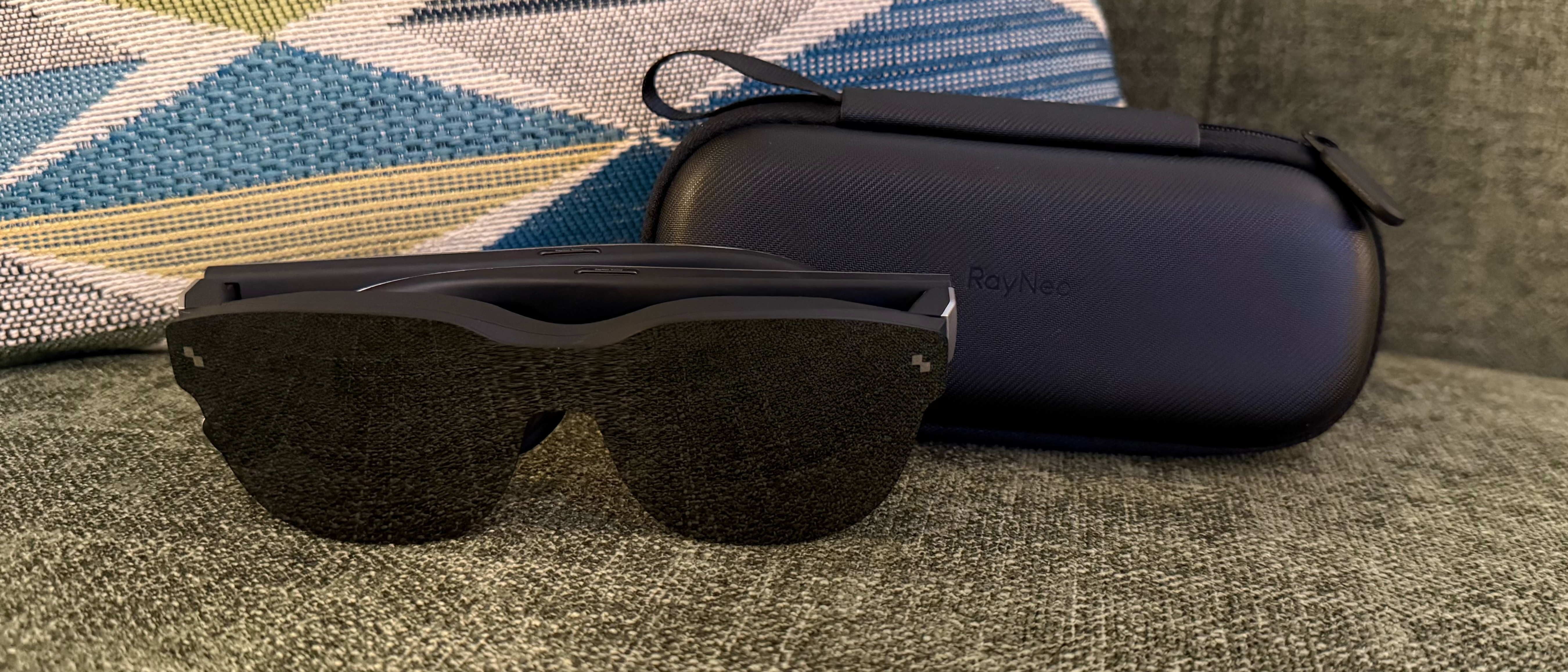Tom's Hardware Verdict
RayNeo has a winner on its hands with the new Air 3s AR glasses.
Pros
- +
Improved sharpness across the entire viewing area
- +
Vastly improved four-speaker audio system
- +
Even better value with a $269 MSRP
Cons
- -
No included light blockers
- -
Chassis still feels cheap
Why you can trust Tom's Hardware
RayNeo has been quickly iterating on its line of augmented reality glasses. While the company’s glasses don’t boast the rich feature set of competitors like Xreal, pricing tends to be more affordable for shoppers.
The company’s latest glasses, the Air 3s, are another evolutionary upgrade that offer improved performance and vastly superior audio over prior generations while retaining the same affordability that has always been a draw for RayNeo.
Design of the RayNeo Air 3s AR Glasses
Since I recently reviewed the RayNeo Air 2s, I initially thought there was a mix-up in the shipment sent to me because the Air 3s look the same from the outside. This is both good and bad – while the design is attractive, the use of cheap plastics still doesn’t impart a substantial feel to the glasses.
The Air 3s includes a shaded, single-piece front lens. Unlike the Xreal One, this opaque lens doesn’t feature electrochromic dimming. You also don’t get a separate, physical light blocker in the box, so if the default dimming isn’t enough to block ambient light from ruining your viewing experience, you’re out of luck (unless you go for a homemade or third-party solution).



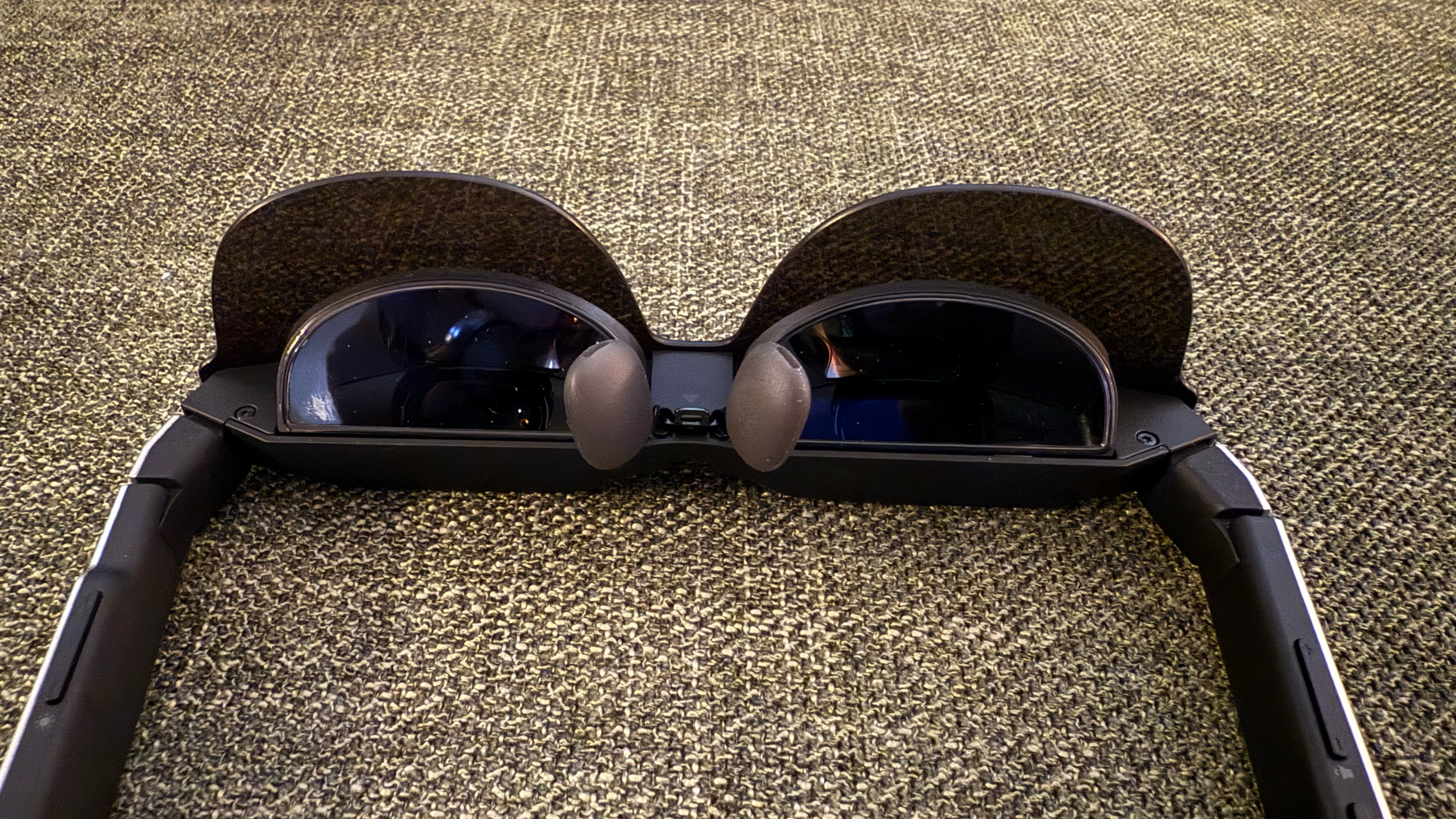
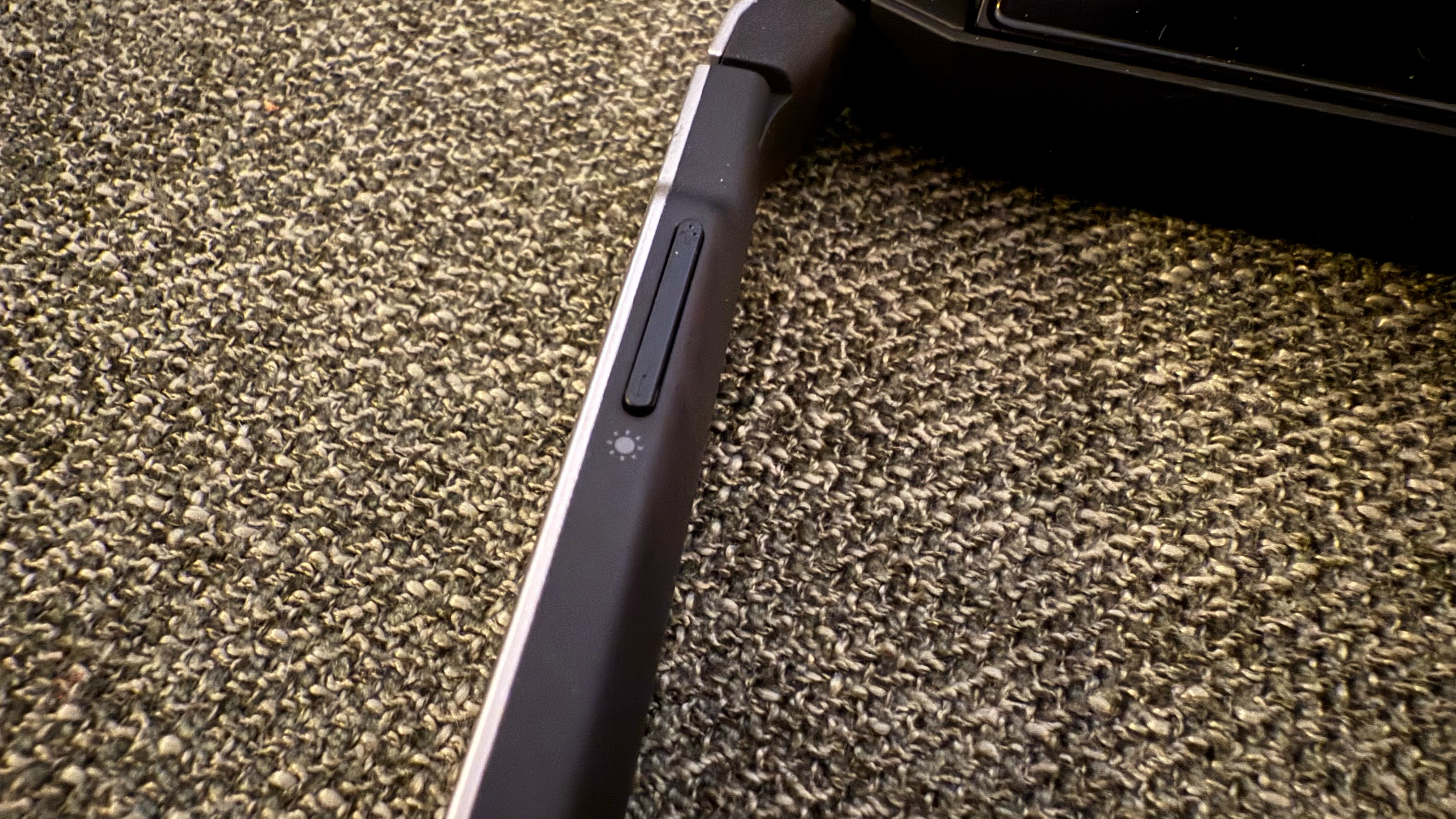

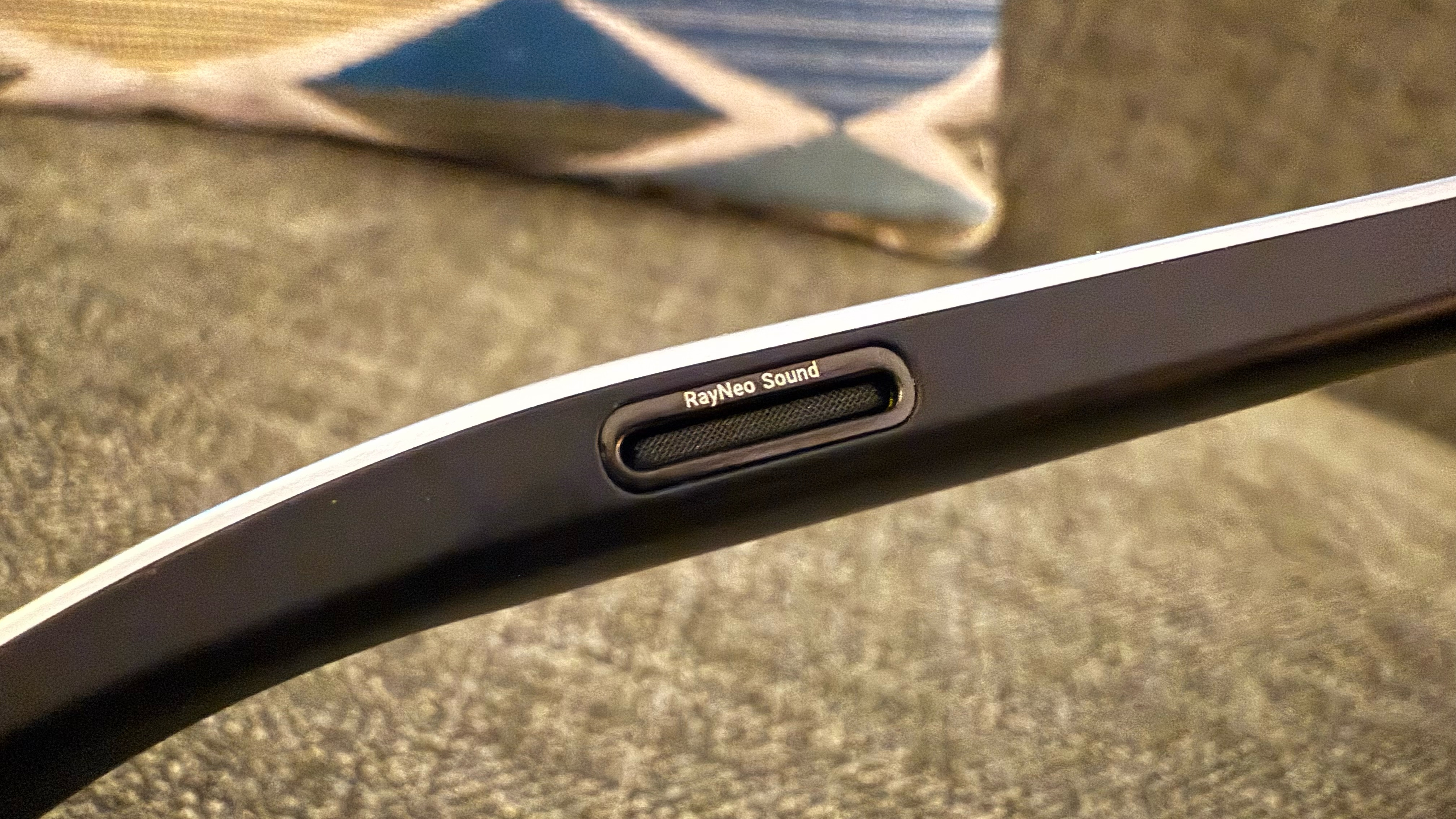
You’ll also notice the familiar silver-colored, three-position arms sprouting from the primary frame. The left arm contains a volume rocker and a menu button, while the right arm has a brightness rocker and a USB-C port at the end for the included USB-C to USB-C cable. I will mention that RayNeo no longer sticks the ugly FCC label on the outside of the right arm.
The Air 3s continues to use Sony Micro-LED panels, as do most consumer AR glasses. However, RayNeo has made some tweaks thanks to the inclusion of its HueView screen technology, which aims to provide a richer palette of colors. As a result, the Air 3s comply with the IMAX Enhanced standard, covering 98 percent of DCI-P3 and 145 percent of sRGB and delivering a native contrast ratio of 200,000:1 (up from 100,000:1 on the Air 2s). Maximum brightness has also improved slightly, increasing from 600 nits to 650 nits.
Long-term wearing of AR glasses can cause fatigue (as I experienced acutely with the Air 2s), so RayNeo has implemented its 3,840 Hz DC+PWM “OptiCare” dimming system. OptiCare regulates color output and minimizes flickering that could cause eye discomfort.
Get Tom's Hardware's best news and in-depth reviews, straight to your inbox.
RayNeo also turned their attention to the audio subsystem, which was a sore point during my time with the Airs 2s. This time, the company uses an in-house designed and turned four-speaker setup with a claimed 200 percent boost in acoustic performance.
The box includes two nose pads, one of which is already installed. RayNeo also provides a sample frame for prescription lenses, a carrying case, and a cleaning cloth. The company continues to include a hard carrying case, although it has received a slight redesign compared to the version included in the Air 2s. It has enough room for the glasses, the USB-C cable, and the cleaning cloth.
Specifications for the RayNeo Air 3s
Display | 1920 x 1080 per eye |
Display Type | OLED |
Brightness | 650 nits |
Field of View | 47 degrees |
Degrees of Freedom | 3 DoF |
Audio | Dual open-air speakers |
Connectivity | USB-C |
Weight | 2.68 ounces (76 grams) |
Using the RayNeo Air 3s
The Air 3s connects to supported devices (which support video-out over USB-C) with the included braided USB-C cable. The USB-C end that plugs into the right arm of the Air 3s has a slight downward bend, which prevents the cable from sticking straight out behind you.
There is broad support for most smartphones, tablets, PCs, and Macs on the market. I had no trouble using the Air 3s with a MacBook Pro (M3 Pro), Mac Mini (M4), iPhone 16 Pro, iPad Pro (M4), Lenovo Legion Go, and a Legion Go S. I attempted to use the glasses with the Asus ZenFone 10, but it was a no-go since the Android smartphone doesn’t support video-out via its USB-C port.
The Air 3s simulates a 201-inch virtual display projected six meters in front of your face and has a 47-degree field of view (FoV), slightly up from 46 degrees on the Air 2s. However, the most significant change I noticed with the Air 3s was that I didn’t experience the edge blurriness that marred my experience with the Air 2s.
The Air 2s were crisp towards the center of my field of vision, but became blurrier towards the periphery. This mismatch caused severe fatigue as my eyes attempted to lock on to on-screen text. I had no issues with the Air 3s, even after spending multiple hours using the glasses to write and edit articles.
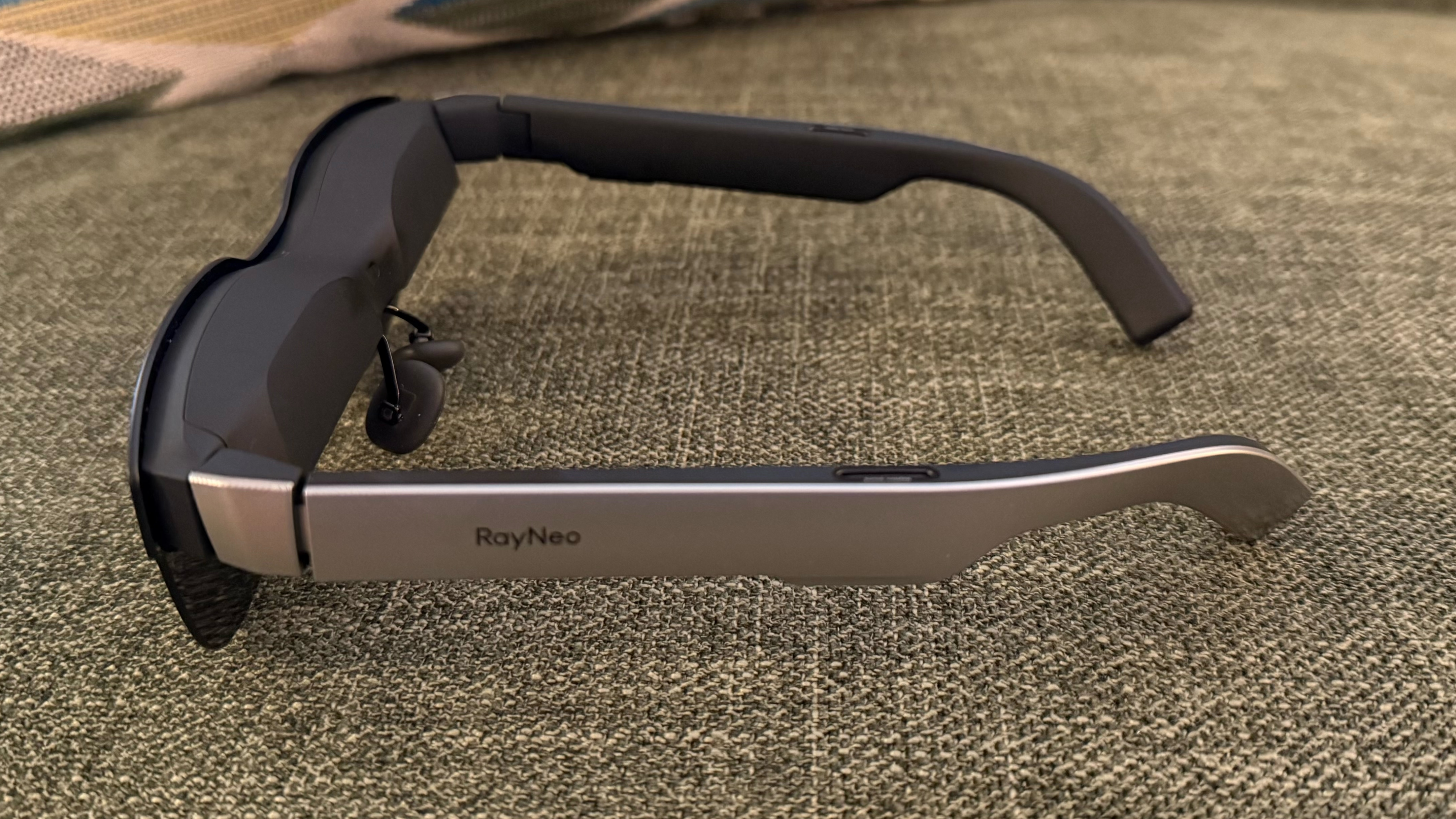
As was the case with the Air 2s, I was able to thoroughly enjoy movies on the Air 3s. While it’s perfectly feasible to use the glasses for productivity tasks in Windows 11 and macOS Sequoia 15.4, I feel they are more at home when used purely as a media consumption accessory.
For example, I enjoyed playing Microsoft Flight Simulator 2024 and Forza Horizon 5 using the Air 3s with the Legion Go S. The former game was incredibly immersive with the “big screen” experience – playing it at night, with all the lights off in a room with nighttime also set in the game’s time settings is a transformative experience.
I also enjoyed just lounging around and watching movies on the Air 3s. I watched Inception and Oppenheimer with the glasses, and even managed to watch a good portion of one of my childhood favorite movies: Innerspace.
The enjoyable media watching experience was enhanced by another significant upgrade over the Air 2s: the audio system. I harped on the mediocre speaker system on the Air 2s, which sounded horrible and had issues with distortion. More problematic was the incessant buzzing and rattling that I experienced. The Air 3s exhibits none of those ailments and actually has performance more closely aligned with the Xreal One Series.
I still would have liked a tad more bass, but there’s not much else to complain about with the sound quality. RayNeo even includes a Whisper Mode 2.0, which cuts down on sound leakage from the speakers when playing multimedia content while wearing the Air 3s in public.
Bottom Line
The previous generation RayNeo Air 2s was a big disappointment; however, the Air 3s have improved upon its predecessor in two significant ways: the speaker system and the optics. It’s like night and day comparing the audio performance of the Air 3s with its predecessor. Audio sounds more precise, and there’s none of the plastic buzzing that plagued the Air 2s. The blurriness I experienced around the edges of the viewing area on the Air 2s has also been addressed with the Air 3s.
Even better, the improvements don’t come with a price hike compared to its predecessor. The Air 2s are currently available for $299 from Amazon, while the Air 3s will go on sale priced at $269, according to RayNeo. That’s a screaming bargain in the AR glasses realm, and makes the Air 3s a must-buy if you’re in the market.

Brandon Hill is a senior editor at Tom's Hardware. He has written about PC and Mac tech since the late 1990s with bylines at AnandTech, DailyTech, and Hot Hardware. When he is not consuming copious amounts of tech news, he can be found enjoying the NC mountains or the beach with his wife and two sons.
-
abufrejoval I fell for one of Mr Hill's reviews on the Xreal glasses.Reply
They turned out to be far below the threshold of a usable product and a lot of it hat to do with the fact that none of these glasses seem able to match the eye spacing (IPD) of a Western male (or Asian female): if you're not in the sweet spot of that hardware supports, your experience will be terrible.
Mr. Hill seems to be well inside the IPD sweet spot of these glasses so he tends to gloss over that aspect.
There was also tons of issues with the software: it never delivered anywhere near what Xreal seemd to suggest.
I recommend you be very careful before buying any of these and make sure you can return them if they do not immediately fulfill everything you hope for: all of these are both highly experimental and suffer from pretty near non-existent long-term support.
